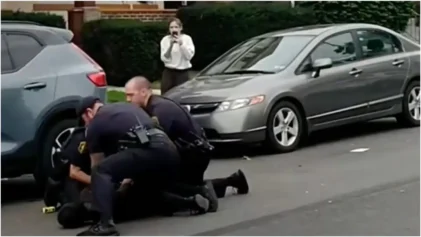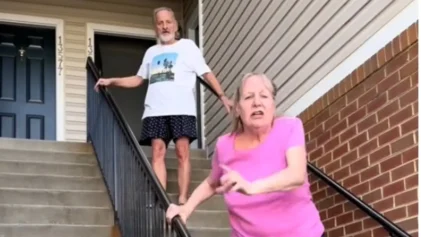Previously unreleased videos of the 2018 killing of a beloved Chicago barber show police discussions right after the fatal shooting that contradict the facts depicted in footage of the incident.
Harith Augustus, 37, was shot five times by Chicago Police Officer Dillan Halley on July 14, 2018, after a confrontation with a group of officers. Police said they saw an “outline of a handgun visible under his shirt.”

When questioned, Augustus pulled out his wallet to show Officer Quincy Jones his Firearms Owners Identification card while three other officers, including Halley, circled him. Two of the officers grabbed Augustus as he held open his wallet. Halley had his right arm, and Officer Megan Fleming held his shirt.
Augustus pulled away and broke free from the officers causing his shirt to rise, revealing a handgun on his hip in a holster.
Surveillance and body-camera footage shows Augustus’ hands moving toward his holster as he pulled away from officers. A patrol vehicle blocked his path, and he diverted left, stopped, turned and motioned towards his holster again. Halley then fired five shots.
Within seconds, Halley mischaracterized the shooting — the first of many times he and his partner misrepresented the day’s events, according to footage.
“Shots fired at the police,” Halley said over the police radio. “Or police officer shoots. F——.”
Augustus did not fire any shots. Another officer unfastened the dead man’s holster to remove Augustus’ gun 10 seconds after Halley fired the fifth shot.
The new footage was published by The Intercept, which purports that the interaction between Halley and Fleming went against policy and was an attempt to create a false narrative to justify the shooting. The officers, through their on-camera dialogue, contend Augustus ran because he was asked about his gun permit and that he assaulted Fleming. The two officers also try to perpetuate the narrative that the other officers took cover because Augustus drew his weapon and was about to fire it at them.
“Why did he have to pull a gun out on us?” Halley asked Fleming while he paced back and forth.
“Breathe in through your nose, out through your mouth. I feel like I wasn’t there for you,” Fleming said. “I was trying to grab him.”
“I had to. He was going to shoot us,” Halley said.
“I know you did. He was going to shoot us,” Fleming said. “He was about to kill us.”
Halley was still in his probationary period at time, having been with the Chicago Police Department for a year.
“He pulled a gun on us,” Halley said.
“I know he did,” Fleming said. “I know he did. Look at me. You’re OK.”
Halley and Fleming built on the narrative when the first supervisor arrived on the scene. By that time, the shooting drew an angry crowd.
“He pulled a gun on me,” Halley told Sgt. Jeffrey Aldrich.
“Was it only one? Just you? Who else shot?” Aldrich asked.
“He grabbed me, and he cut me,” Fleming said.
According to The Intercept, the supervisors also broke Chicago Police Department protocol by letting Fleming and Halley talk about the incident.
Facing the accusations of wrongdoing from the crowd, a lieutenant and Fleming hustle Halley into a patrol car off the scene onto a residential street before the two officers even give their statements. Fleming and Halley embraced, and the female officer consoled her partner.
“Dude, I went behind that car, and I thought I was gonna — You did the F——- — You saved everyone. You saved my f——— life. You know that, right? You did the right thing,” Fleming said. “I’m telling you right now, I thought we were going to die. Soon as Jones asked him if he had concealed carry —.”
After a full investigation by Chicago’s Civilian Office of Police Accountability concluded that officers “lacked sufficient justification to stop Augustus and make physical contact with him.” The review board said the officers failed to detain Augustus and properly activate their body-worn cameras. However, the board concluded Halley’s use of deadly force was consistent with the police department’s policy.
“The use of deadly force is a last resort that is permissible only when necessary to protect against an imminent threat to life or to prevent great bodily harm to the member or another person,” the department policy states.
The shooting spurred civil unrest and protests in the Chicago neighborhood as community members accused the police of excessive force.
On the day of the incident, Chicago Police Superintendent Eddie T. Johnson described Augustus as a “male subject exhibiting characteristics of an armed person” who was killed in “an armed confrontation.”


